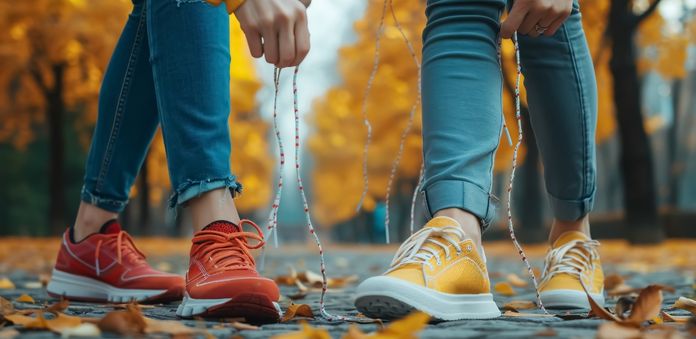Footwear Tips for Stability
When we talk about stability, it’s not just about balance while walking or running — it’s also about maintaining your posture, controlling sway, and feeling confident when you’re standing or shifting your weight. Your footwear plays a huge role in that. The right shoe can be the difference between feeling solid on your feet and feeling wobbly, fatigued, or at risk of a fall.
In this blog we’ll cover:
– Why footwear matters for stability
– What features to look for in shoes
– How to choose and maintain them
– When to seek professional help
Why footwear matters for stability
Your shoe is your “ground interface” — the part of your body that meets the surface. If that interface is compromised (poor fit, slippery outsole, collapsed arch, uneven wear), your body has to work harder to maintain stability. Some key reasons footwear matters:
– Base of support: A stable shoe gives you a broad, flat base so your foot can respond to uneven surfaces. Shoes with narrow heels or unstable soles make stability harder.
– Control of foot mechanics: Your foot needs to distribute forces, adapt to the ground, and maintain the arch/heel alignment. If your shoe collapses or twists easily, you lose that control.
– Sensory feedback: Your feet register ground information (texture, slope, firmness) which your nervous system uses to adjust posture. A sole that is overly cushioned or unstable may dull that feedback.
– Fatigue resistance: Standing or holding posture statically (for example, at a workstation) means your feet and legs are under load for long periods. A good shoe reduces fatigue and hence reduces postural sway and instability.
– Safety from slips/trips: A stable footing prevents sudden perturbations (slips, trips) which can overload your balance system quickly and cause falls. Slip-resistance and good sole design are essential.
In short: if you’re standing, shifting weight, walking over irregular ground, or recovering from injury — your footwear matters much more than you might think.
What to look for in shoes for stability
Here are important footwear features that support static and dynamic stability. Use this as a checklist next time you shop or evaluate your current shoes.
1. Proper fit & heel control
– Heel shouldn’t lift excessively or wobble side-to-side.
– There should be a snug heel counter (the back part of the shoe) that keeps the heel from slipping.
– The toe box should allow your toes to spread naturally (crowded toes reduce stabilising surface).
2. Stable sole and outsole
– The outsole should be flat-ish, with enough contact with the ground to provide a secure base.
– Avoid overly soft or “mushy” soles (while they may feel comfortable, they can reduce sensory feedback and allow more foot motion).
– Good traction and slip resistance — especially if standing or walking on slick surfaces.
3. Arch and mid-foot support
– The mid-foot (arch) needs to be supported so your foot doesn’t collapse inward or outward. This maintains proper alignment of ankle, knee and hip.
– Depending on your foot type (flat vs high arch) you may need more or less built-in support or an orthotic.
4. Cushioning and shock absorption (balanced)
– While cushioning doesn’t directly equate to stability, it helps reduce fatigue and absorption of micro-impact which in turn supports stable posture.
– But avoid extremely soft cushioning that allows too much foot motion — that can destabilise.
How to choose & maintain your shoes
Here are practical steps for choosing stable footwear and keeping it performing well:
– Try shoes later in the day: Your feet swell during the day; buying shoes when your feet are at their largest helps ensure fit.
– Use the socks you normally wear: When testing shoes, wear the same socks you’ll use daily.
– Walk on different surfaces: Try the shoes on firm ground, slightly uneven surface, maybe a slight slope. Notice if your foot feels secure.
– Check heel slip: With laces tied normally, walk and then stop, bend your knees slightly — the heel shouldn’t lift out.
– Heel to toe roll: A good shoe lets your foot roll naturally from heel to toe without exaggerated bounce or “mushy” feel.
– Rotate shoes if possible: If you stand or walk a lot, rotating between two pairs can reduce fatigue and extend life.


